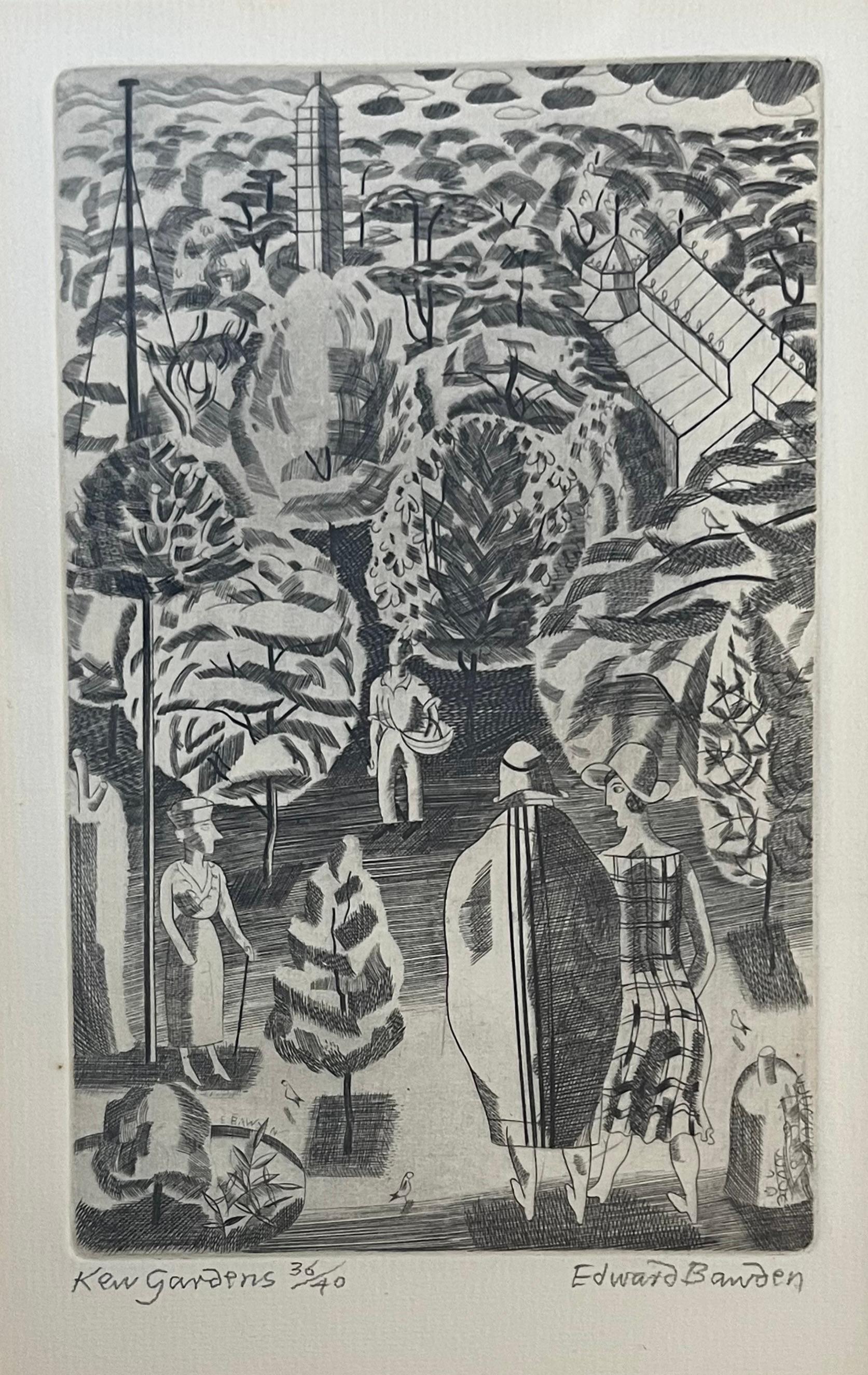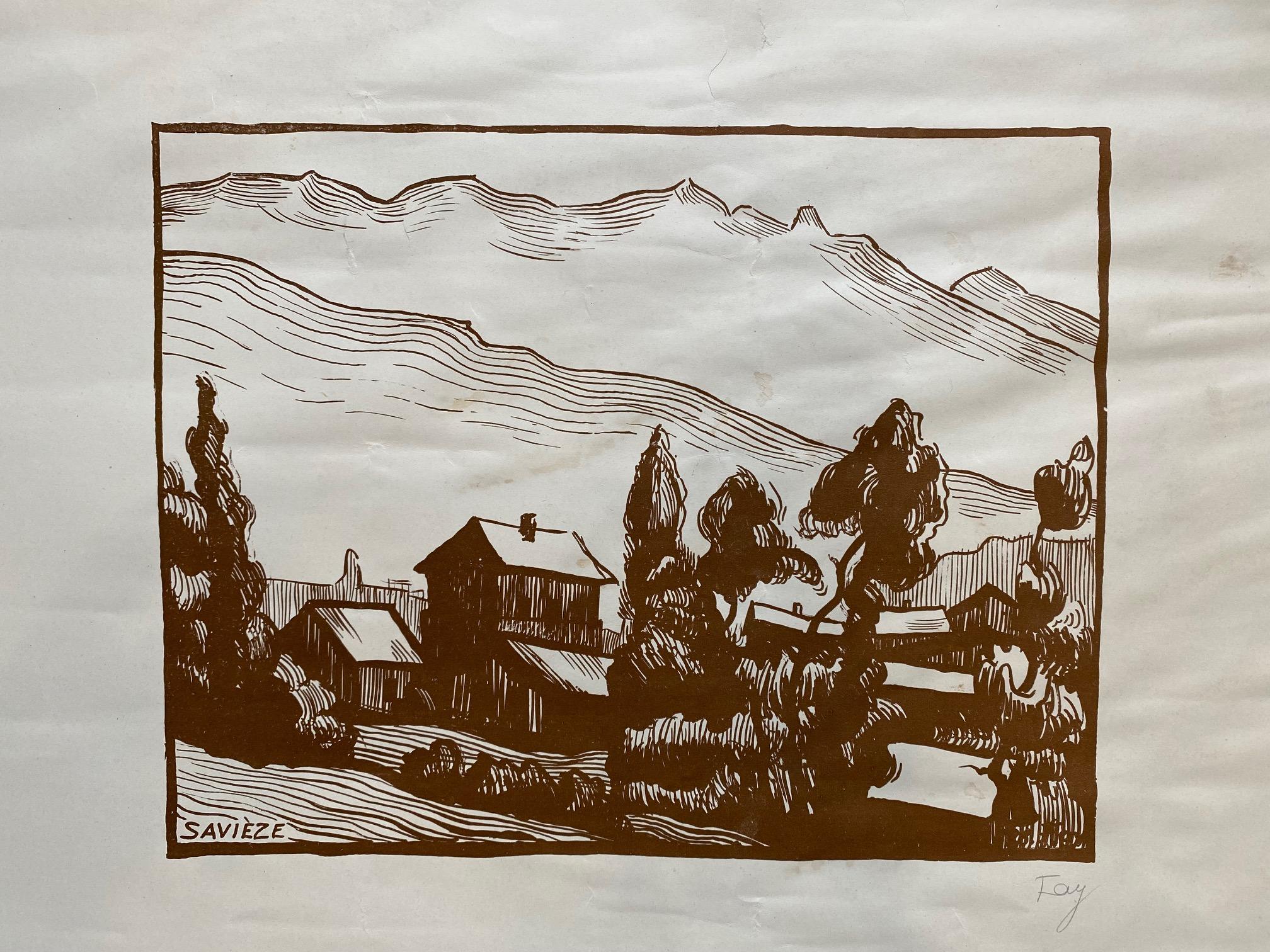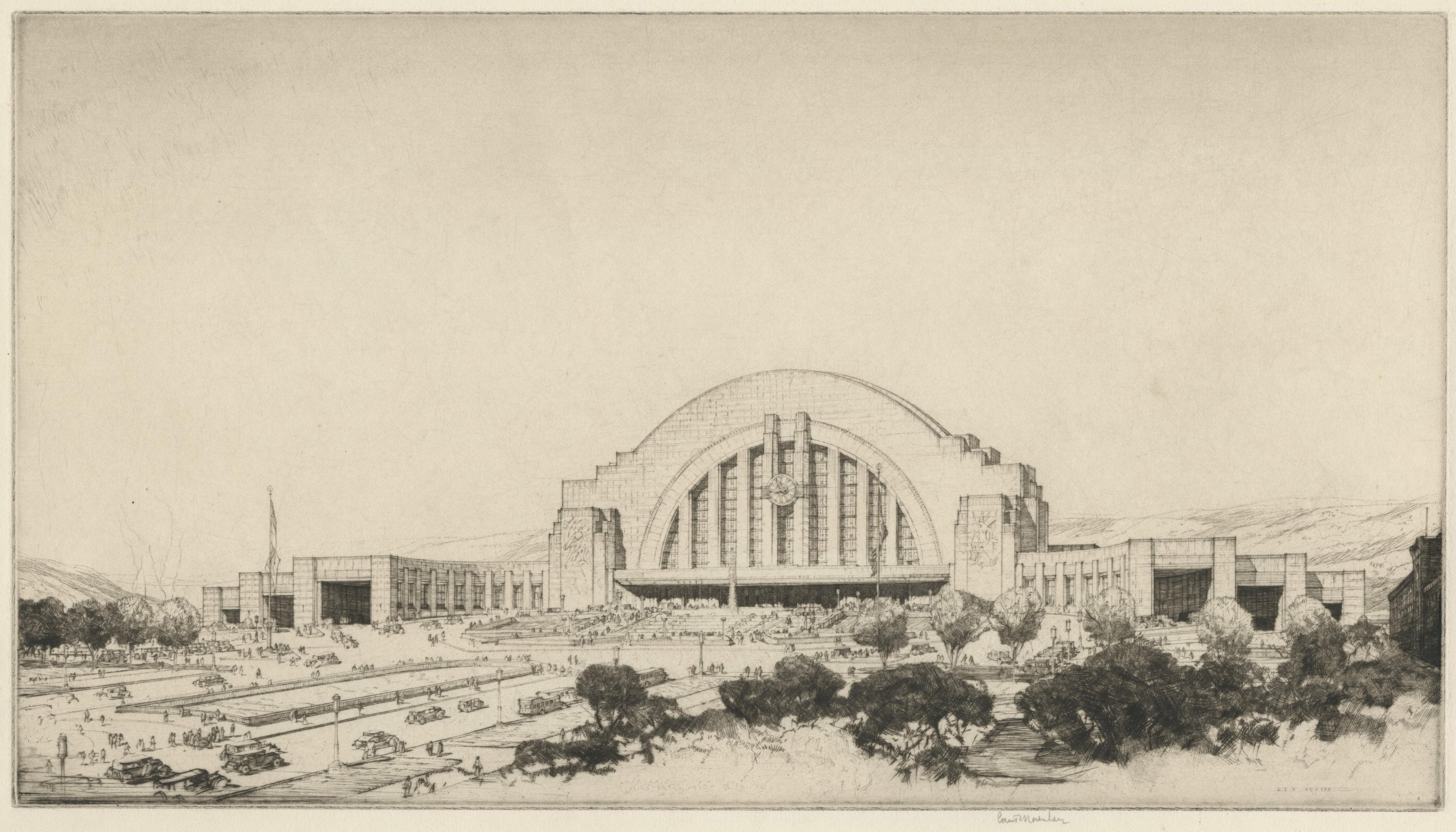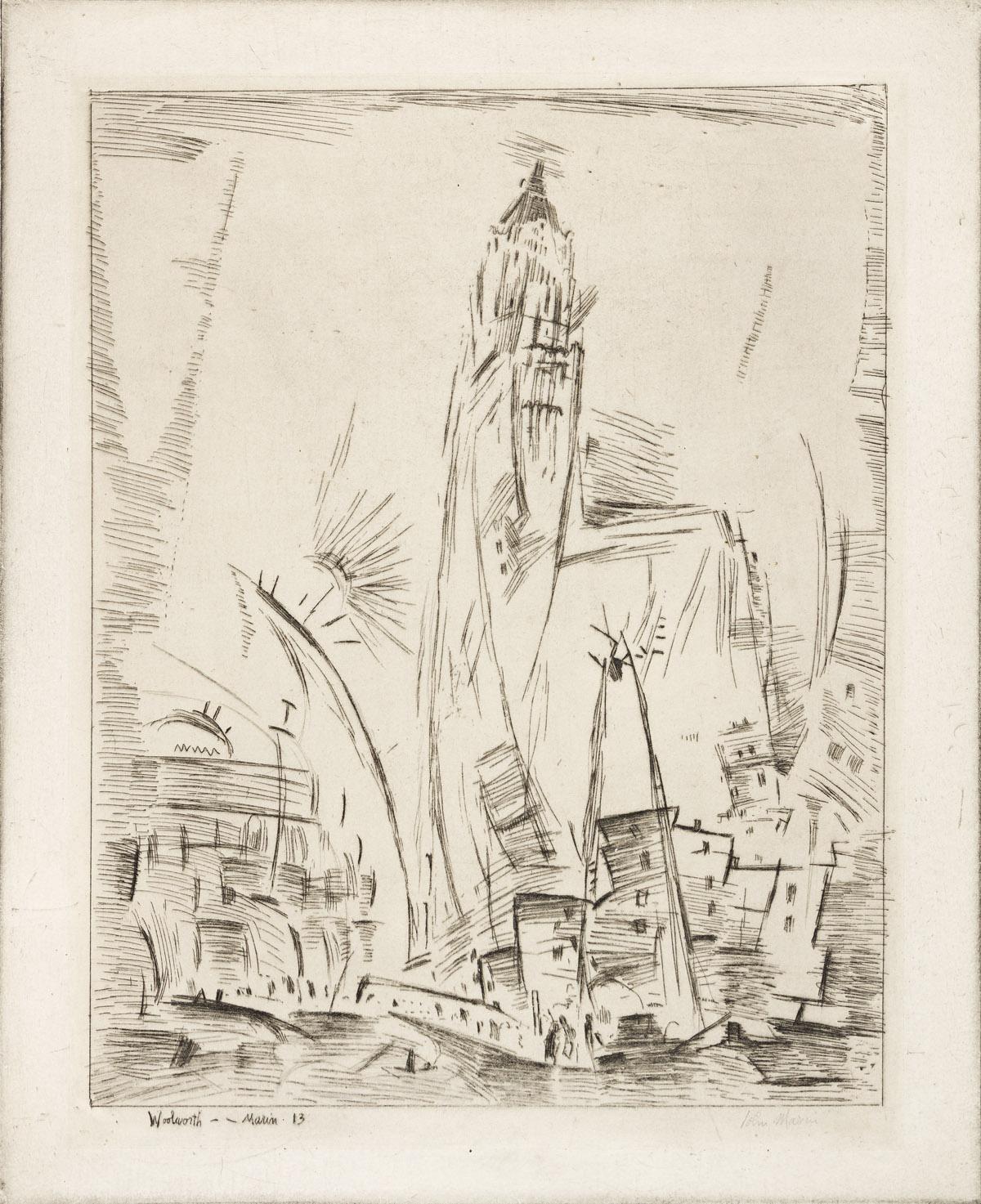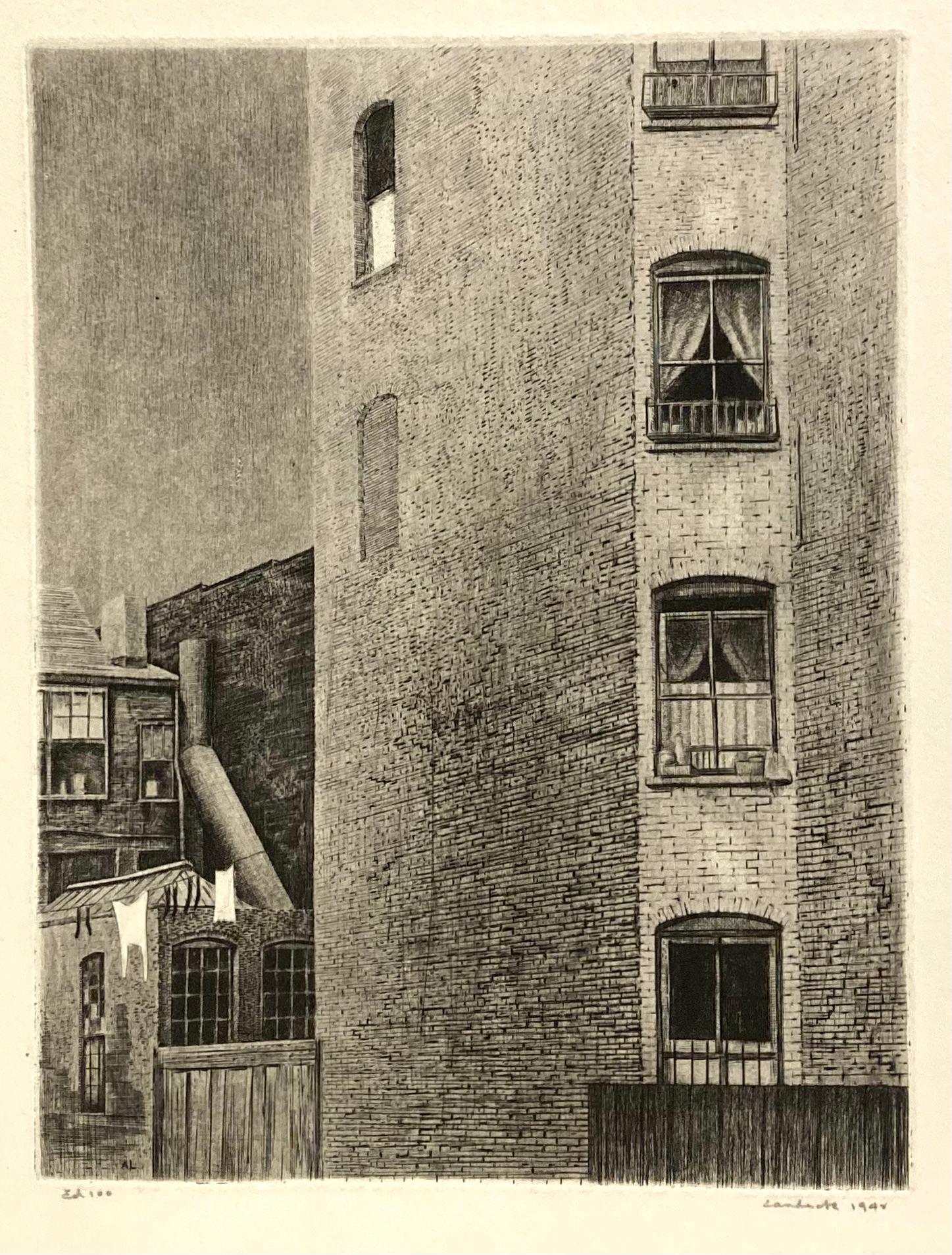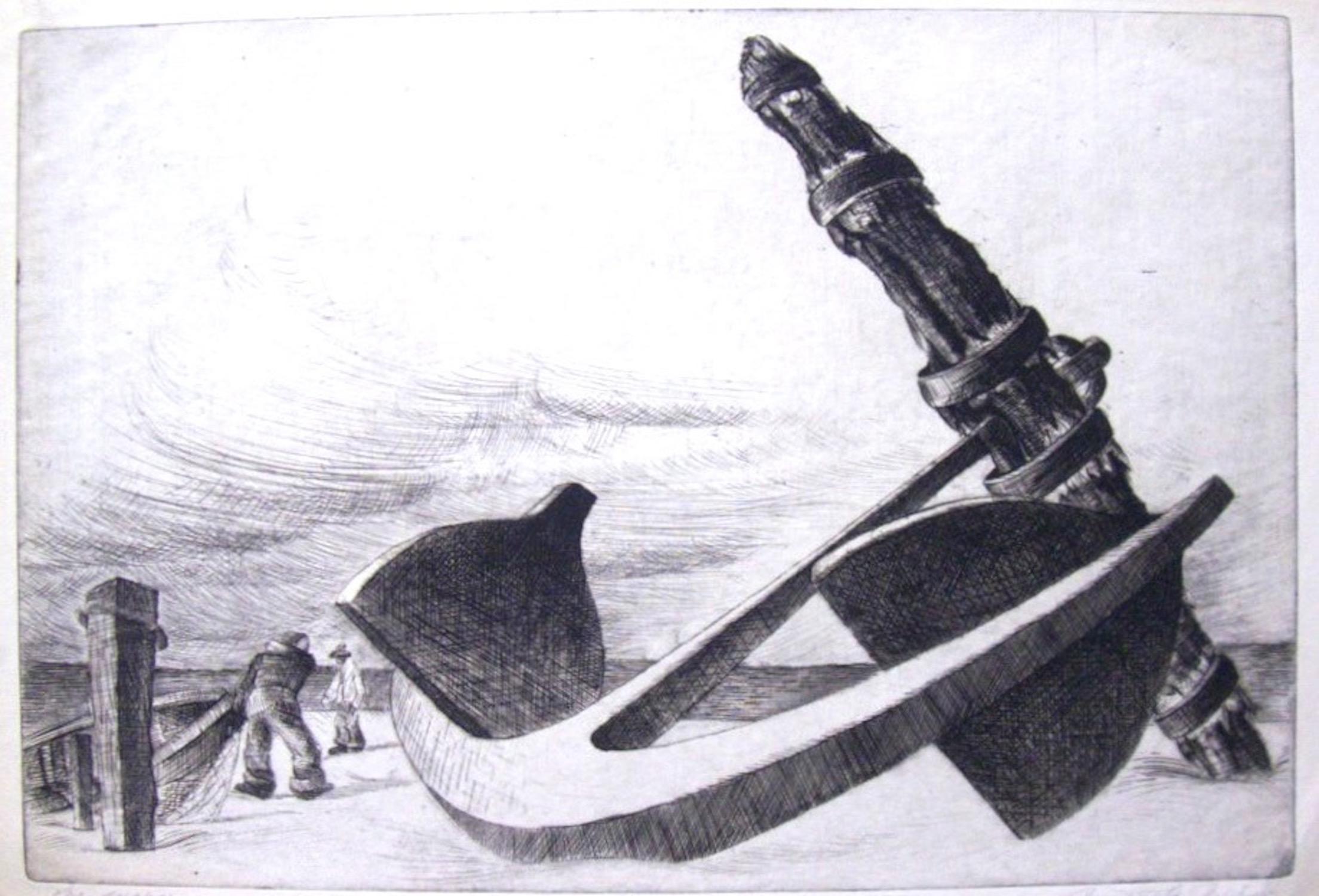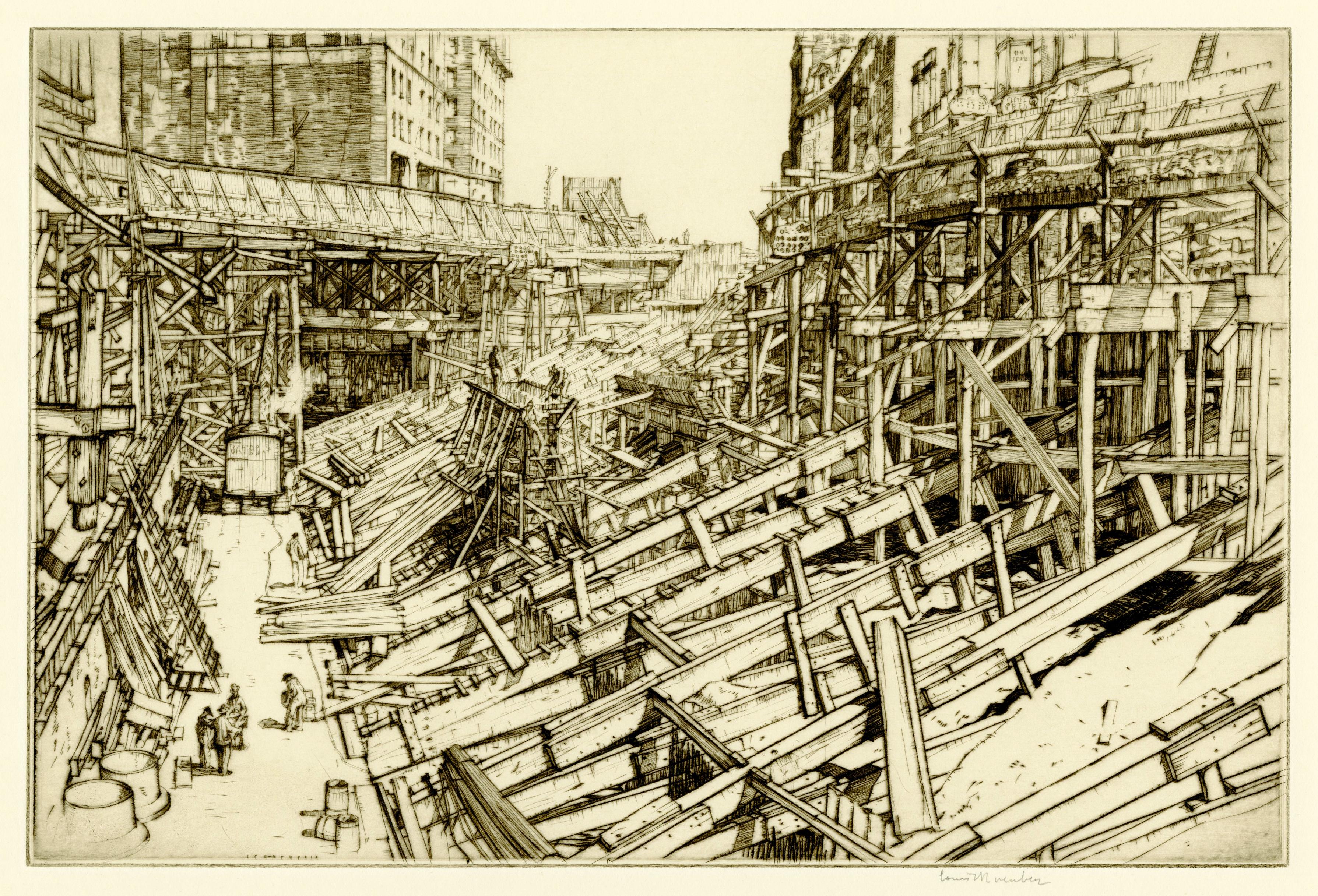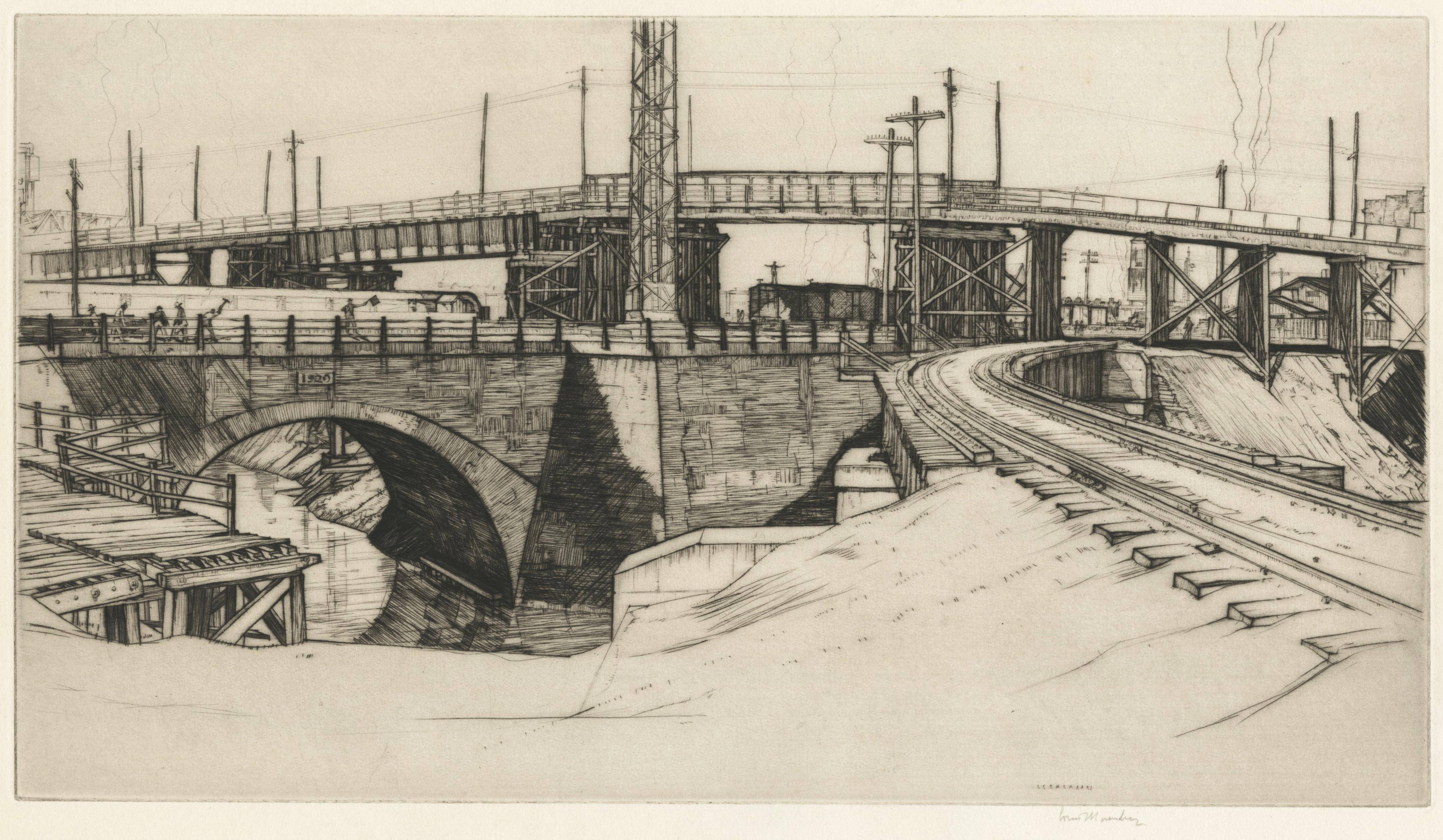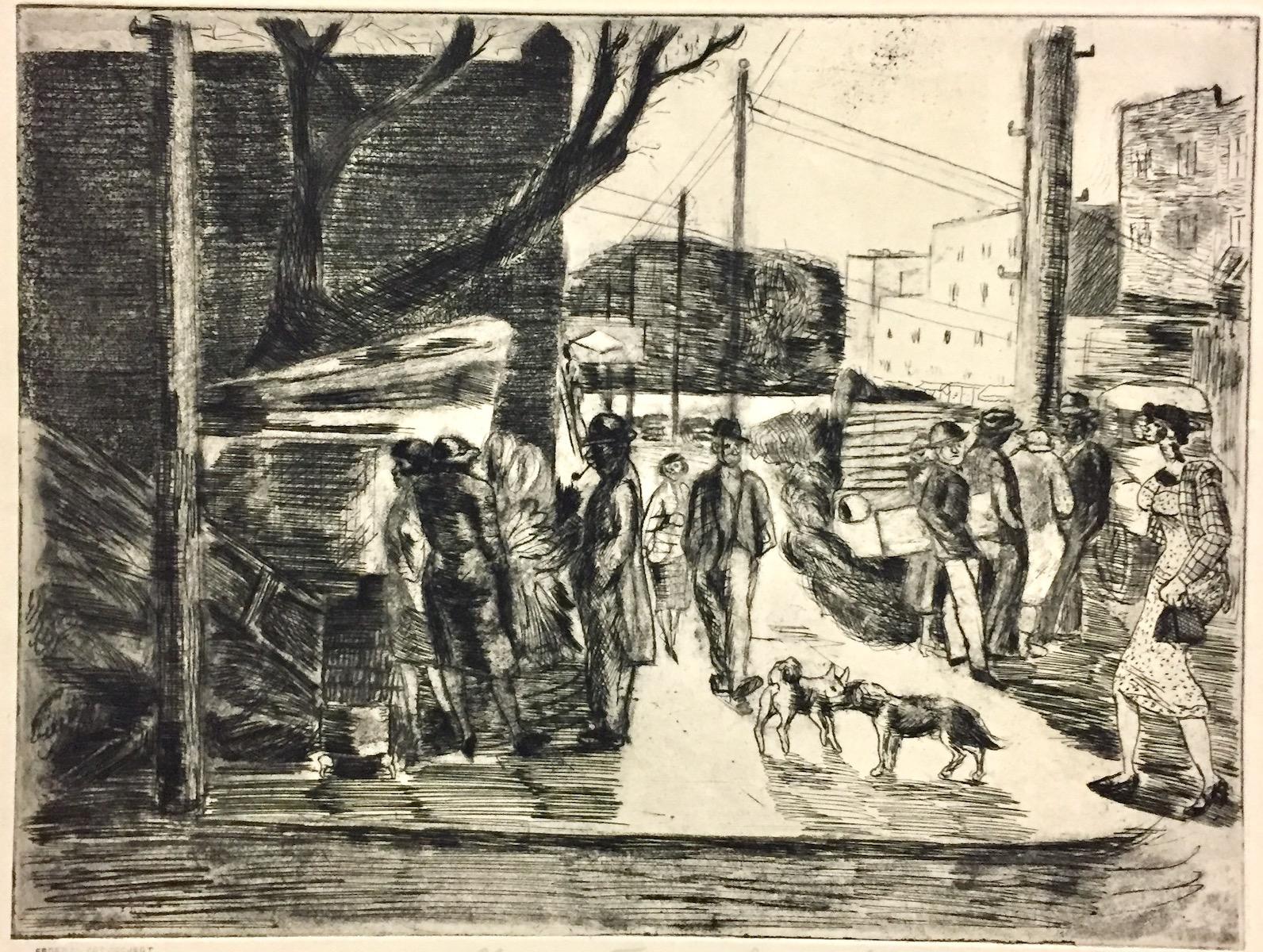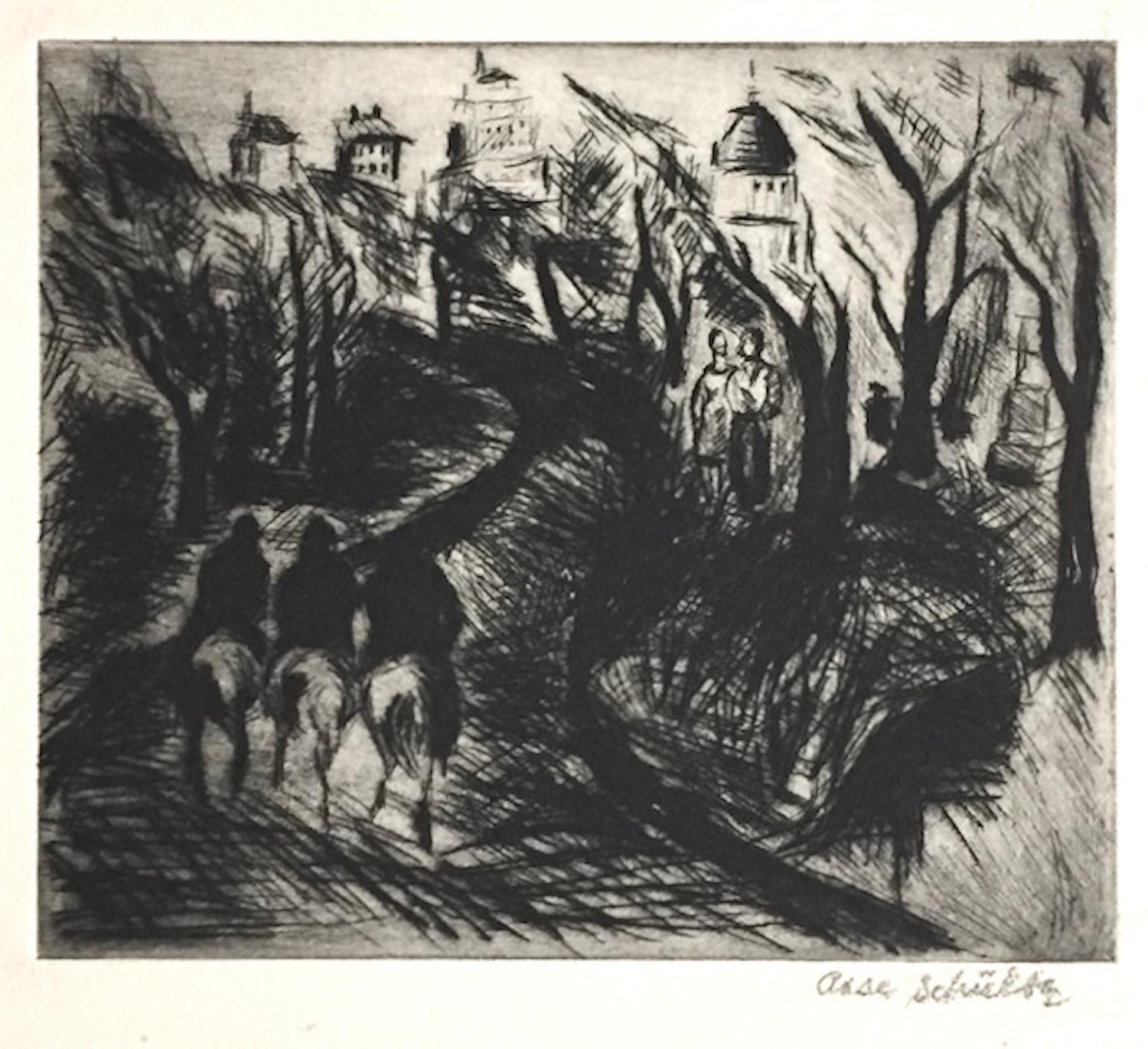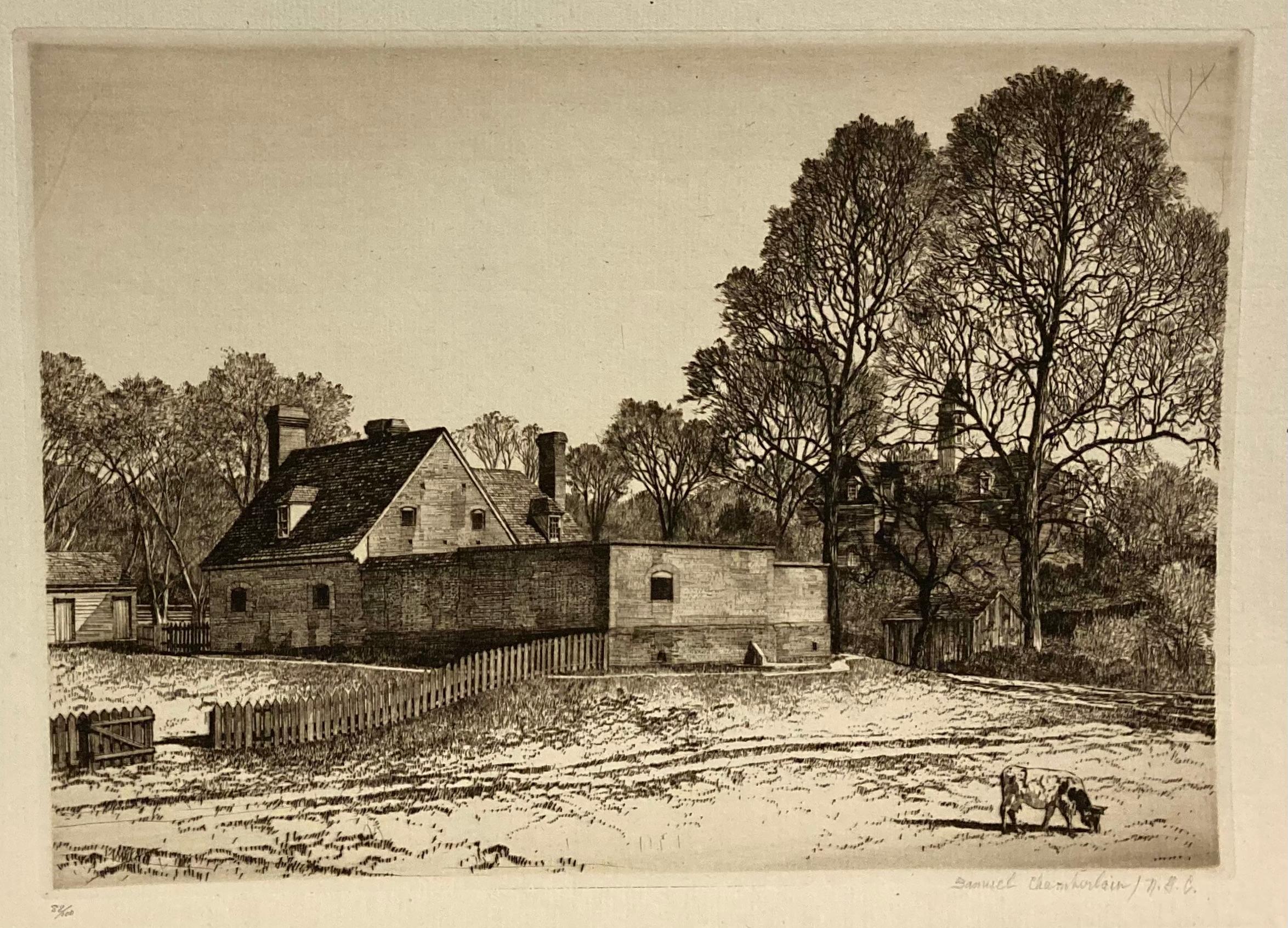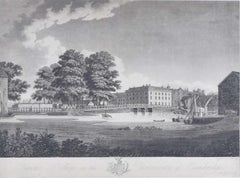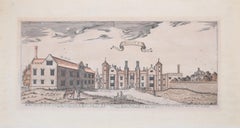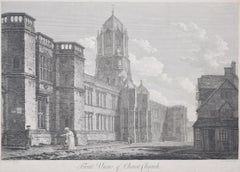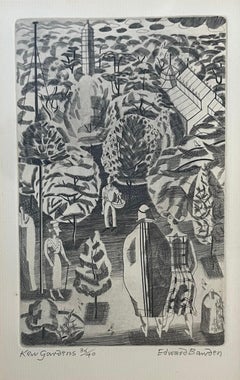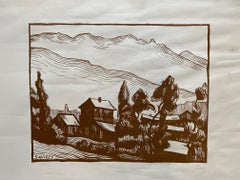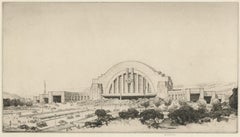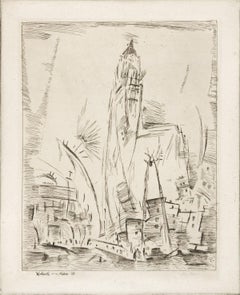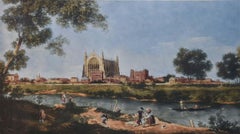
Lawrence Josset Eton College Engraving 1980 after Canaletto Public School UK
View Similar Items
Want more images or videos?
Request additional images or videos from the seller
1 of 5
Lawrence JossetLawrence Josset Eton College Engraving 1980 after Canaletto Public School UK1980
1980
Price:$704.48
$745.12List Price
About the Item
- Creator:Lawrence Josset (1910 - 1995, British)
- Creation Year:1980
- Dimensions:Height: 12.6 in (32 cm)Width: 21.66 in (55 cm)
- Medium:
- Movement & Style:
- Period:
- Condition:
- Gallery Location:London, GB
- Reference Number:1stDibs: LU79538451282
About the Seller
4.8
Vetted Professional Seller
Every seller passes strict standards for authenticity and reliability
Established in 2014
1stDibs seller since 2017
354 sales on 1stDibs
Typical response time: 5 hours
Authenticity Guarantee
In the unlikely event there’s an issue with an item’s authenticity, contact us within 1 year for a full refund. DetailsMoney-Back Guarantee
If your item is not as described, is damaged in transit, or does not arrive, contact us within 7 days for a full refund. Details24-Hour Cancellation
You have a 24-hour grace period in which to reconsider your purchase, with no questions asked.Vetted Professional Sellers
Our world-class sellers must adhere to strict standards for service and quality, maintaining the integrity of our listings.Price-Match Guarantee
If you find that a seller listed the same item for a lower price elsewhere, we’ll match it.Trusted Global Delivery
Our best-in-class carrier network provides specialized shipping options worldwide, including custom delivery.More From This Seller
View AllQueen's College, Cambridge, engraving by Richard Bankes Harraden
Located in London, GB
Richard Bankes Harraden
Queen's College, Cambridge
Engraving
40 x 54 cm
Inscribed to the bottom: 'Published June 16th 1798 by R. Harraden.'
A late eighteenth-century view of Queens'...
Category
1790s Landscape Prints
Materials
Engraving
Rycote House, Oxfordshire engraving by Henry Winstanley
Located in London, GB
To see more, scroll down to "More from this Seller" and below it click on "See all from this Seller."
Henry Winstanley (1644 - 1703)
Rycote House, Oxfordshire
Engraving
19 x 44 cm
...
Category
Early 17th Century Landscape Prints
Materials
Engraving
Trinity College, Cambridge engraving by David Loggan
By David Loggan
Located in London, GB
To see our other views of Oxford and Cambridge, scroll down to "More from this Seller" and below it click on "See all from this seller" - or send us a message if you cannot find the view you want.
David Loggan (1634 - 1692)
Trinity College, Cambridge (1690)
Engraving
80 x 50 cm
Loggan's marvellous and large view of Trinity from the 'Cantabrigia Illustrata'.
Loggan was born to English and Scottish parents, and was baptised in Danzig in 1634. After studying engraving in Danzig with Willem Hondius (1598-1652 or 1658), he moved to London in the late 1650s, going on to produce the engraved title-page for the folio 1662 Book of Common Prayer. He married in 1663 and moved to Nuffield in Oxfordshire in 1665. Loggan was appointed Public Sculptor to the nearby University of Oxford in the late 1660s, having been commissioned to produce bird’s-eye views of all the Oxford colleges. He lived in Holywell Street as he did this. The 'Oxonia Illustrata' was published in 1675, with the help of Robert White (1645-1704). Following its completion, Loggan began work on his equivalent work for Cambridge; the 'Cantabrigia Illustrata' was finally published in 1690, when he was made engraver to Cambridge University.
The 'Oxonia Illustrata' also includes an engraving of Winchester College (Winchester and New College share William of Wykeham as their founder) whilst the 'Cantabrigia Illustrata' includes one of Eton College (which shares its founder, Henry VIII, with King’s College).
Bird’s-eye views from this era required a particular talent as an architectural perspectivist; it was not until 1783 that it became possible for artists to ascend via hot air balloons and view the scenes they were depicting from above. Loggan thus had to rely on his imagination in conceiving the views.
Loggan’s views constitute the first accurate depictions of the two Universities, in many ways unchanged today. Whilst the Oxford engravings were produced in reasonable numbers and ran to a second edition by Henry Overton (on thicker paper and with a plate number in Roman numerals in the bottom right-hand corner), those of Cambridge were printed in much smaller numbers.
The Dutchman Pieter van der Aa published some miniature versions of the engravings for James Beverell’s guidebook to the UK, 'Les Delices de la Grande Bretagne' (circa 1708). The contemporary artist Andrew Ingamells...
Category
1690s Realist Landscape Prints
Materials
Engraving
Christ Church, Oxford 18th century engraving by John Dadley after Edward Dayes
Located in London, GB
To see our other views of Oxford and Cambridge, scroll down to "More from this Seller" and below it click on "See all from this Seller" - or send us a message if you cannot find the ...
Category
1790s Landscape Prints
Materials
Engraving
Pembroke College, Oxford 1705 engraving by David Loggan
By David Loggan
Located in London, GB
To see our other views of Oxford and Cambridge, scroll down to "More from this Seller" and below it click on "See all from this seller" - or send us a message if you cannot find the view you want.
David Loggan (1634 - 1692)
Pembroke College, Oxford (1705)
Engraving
31 x 44 cm
Loggan's view of Pembroke from the second edition of the 'Oxonia Illustrata'.
Loggan was born to English and Scottish parents, and was baptised in Danzig in 1634. After studying engraving in Danzig with Willem Hondius (1598-1652 or 1658), he moved to London in the late 1650s, going on to produce the engraved title-page for the folio 1662 Book of Common Prayer. He married in 1663 and moved to Nuffield in Oxfordshire in 1665. Loggan was appointed Public Sculptor to the nearby University of Oxford in the late 1660s, having been commissioned to produce bird’s-eye views of all the Oxford colleges. He lived in Holywell Street as he did this. The 'Oxonia Illustrata' was published in 1675, with the help of Robert White (1645-1704). Following its completion, Loggan began work on his equivalent work for Cambridge; the 'Cantabrigia Illustrata' was finally published in 1690, when he was made engraver to Cambridge University.
The 'Oxonia Illustrata' also includes an engraving of Winchester College (Winchester and New College share William of Wykeham as their founder) whilst the 'Cantabrigia Illustrata' includes one of Eton College (which shares its founder, Henry VIII, with King’s College).
Bird’s-eye views from this era required a particular talent as an architectural perspectivist; it was not until 1783 that it became possible for artists to ascend via hot air balloons and view the scenes they were depicting from above. Loggan thus had to rely on his imagination in conceiving the views.
Loggan’s views constitute the first accurate depictions of the two Universities, in many ways unchanged today. Whilst the Oxford engravings were produced in reasonable numbers and ran to a second edition by Henry Overton (on thicker paper and with a plate number in Roman numerals in the bottom right-hand corner), those of Cambridge were printed in much smaller numbers.
The Dutchman Pieter van der Aa published some miniature versions of the engravings for James Beverell’s guidebook to the UK, 'Les Delices de la Grande Bretagne' (circa 1708). The contemporary artist Andrew Ingamells...
Category
1670s Realist Landscape Prints
Materials
Engraving
John Speede, Map of the County of Surrey, described and divided into hundreds
By John Speed
Located in London, GB
To see our other views and maps of England - including London, Oxford and Cambridge, scroll down to "More from this Seller" and below it click on "See all from this Seller" - or send us a message if you cannot find the view you want.
John Speed/Speede (1551/2-1629)
The County of Surrey Described and Divided into Hundreds
Engraving with later hand colouring and text to the reverse.
Dated to c.1650
36 x 49 cm
Probably the most famous early English mapmaker, John Speed's early life is somewhat of an enigma. He is believed to have trained as a rolling-press printer, but he was at heart an historian granted a sinecure in the Customs House by Queen Elizabeth to indulge his passion, later becoming a Fellow of the Society of Antiquaries. His first maps were historical, of the Holy Land 'Canaan as it was Possessed both in Abraham and Israels Dayes' and of England and Ireland recording 'all their Civill Warres since the Conquest'.
In 1611 he published his 'Hostory of Great Britaine' which he regarded as his magnum opus, but it was the companion atlas 'Theatre of the Empire of Great Britaine' that - as the first printed atlas of Great Britain - sealed his reputation. William Rogers engraved the first map, 'the County Palatine of Chester' in about 1600, but following his untimely death the task of engraving was passed to Jodocus Hondius of Amsterdam.
By 1612 the atlas was complete, the maps famed for their decorative elements. Many have town plans - Britain's first series of such plans - and descriptive text was printed to the reverse until the 1676 edition. Later printings (up until 1770) were issued without this text. By 1627 it has become a part of a world atlas 'Prospect of the Most Famous Parts of the World'. During the 17th century the plates passed through the hands of a series of publishers, the 1676 edition of Thomas Bassett and Richard Chiswell being regarded as its high point with the inclusion for the first time of a series of important maps. For the first half of the eighteenth century they were firmly established in the hands of the Overton family.
This particular edition originally featured in The Theatre Of The Empire Of Great Britaine. It features attractive inset views of the long-since destroyed Richmond...
Category
17th Century Realist Landscape Prints
Materials
Engraving
You May Also Like
Edward Bawden, Modern British art, Kew Gardens
By Edward Bawden
Located in Harkstead, GB
A wonderful image by one of the great modern masters of English art, depicting a whimsical pastiche of Kew Gardens.
Edward Bawden (1903-1989)
Kew Gardens
Signed, titled and numbered 36/40
Engraving
17 x 10.5 cm
Edward Bawden was a watercolourist, illustrator, designer, printmaker and teacher, born in Braintree, Essex, the county in which he spent much of his life, finally living in Saffron Walden. Studied at Cambridge School of Art from 1919, then at Royal College of Art, 1922-5, on a scholarship, in the design school being taught by Paul Nash. Soon began on commercial work for Poole Pottery and Curwen Press, then in 1928-9 with Eric Ravilious and Charles Mahoney did decorations for Morley College. Bawden went on studying engraving and bookbinding at Central School Arts and Crafts after leaving the Royal College and himself taught there, the Royal Academy Schools and Goldsmiths' College School of Art. First one-man show at Zwemmer Gallery in 1934, after which he showed extensively including RA, being elected RA in 1956. Work poured from Bawden's studio in the 1930s, for companies such as Shell-Mex; book illustrations such as Good Food, 1932, and The Week-end Book, 1939; and a mass of often ephemeral work which evinced a wonderful wit, economy and aptness to subject. Official War Artist in World War II, much of his output being in the Imperial War Museum. Tate Gallery and many other public collections hold his work. Bawden did decorations for the SS Orcades and Oronsay and for the Unicorn Pavilion for the Festival of Britain of 1951. His son was the artist Richard Bawden...
Category
Early 20th Century Modern Figurative Prints
Materials
Paper, Engraving
Savièze by Fred Fay - Engraving 33x42 cm
Located in Geneva, CH
Engraving on paper without frame.
Category
1950s Modern Landscape Prints
Materials
Engraving
$240 Sale Price
20% Off
Cincinnati Union Terminal, Perspective From East
By Louis Conrad Rosenberg
Located in Fairlawn, OH
Cincinnati Union Terminal, Perspective From East
Drypoint, 1930-1931
Signed in pencil lower right (see photo)
Initialed and dated the the plate above the pencil signature
From: Cincinnati Series (8 Plates), this No. 2
Edition: 155, completed May 4, 1931
Delivered to Fellheimer & Wagner, 1931
Louis Conrad Rosenberg
1890-1983
An American architectural etcher and engraver of the 1920's and 1930's era, Louis Conrad Rosenberg first studied at the Massachusetts Institute of Technology...
Category
1930s American Modern Landscape Prints
Materials
Drypoint
Woolworth Building, No. 2
By John Marin
Located in New York, NY
A superb, richly-inked impression of this extremely scarce etching and drypoint. Second state (of 2). Edition of approximately only 10. Signed in pencil by Marin. Published by Alfred...
Category
1910s Modern Abstract Prints
Materials
Drypoint, Etching
Armin Landeck, Tenement Walls
By Armin Landeck
Located in New York, NY
The reference number on this work is Kraeft 88. It's from an edition of 100 and is signed, dated, and numbered, in pencil.
Always an intaglio printmaker, Landeck switched from a mor...
Category
Mid-20th Century American Modern Figurative Prints
Materials
Drypoint
Victor DeWilde, The Anchor (San Francisco), 1930s
Located in New York, NY
Born in Tamines, Belgium, Victor DeWilde (1903-1977) settled in San Francisco around 1925. He studied at the California School of Fine Arts, SF, and California College of Arts & Crafts, Oakland. During the 1930s he taught at Commerce Evening High School and then worked on the WPA Art Education Program. His colleagues included Robert McChesney, Otis Oldfield, George Post...
Category
1930s American Modern Landscape Prints
Materials
Drypoint
